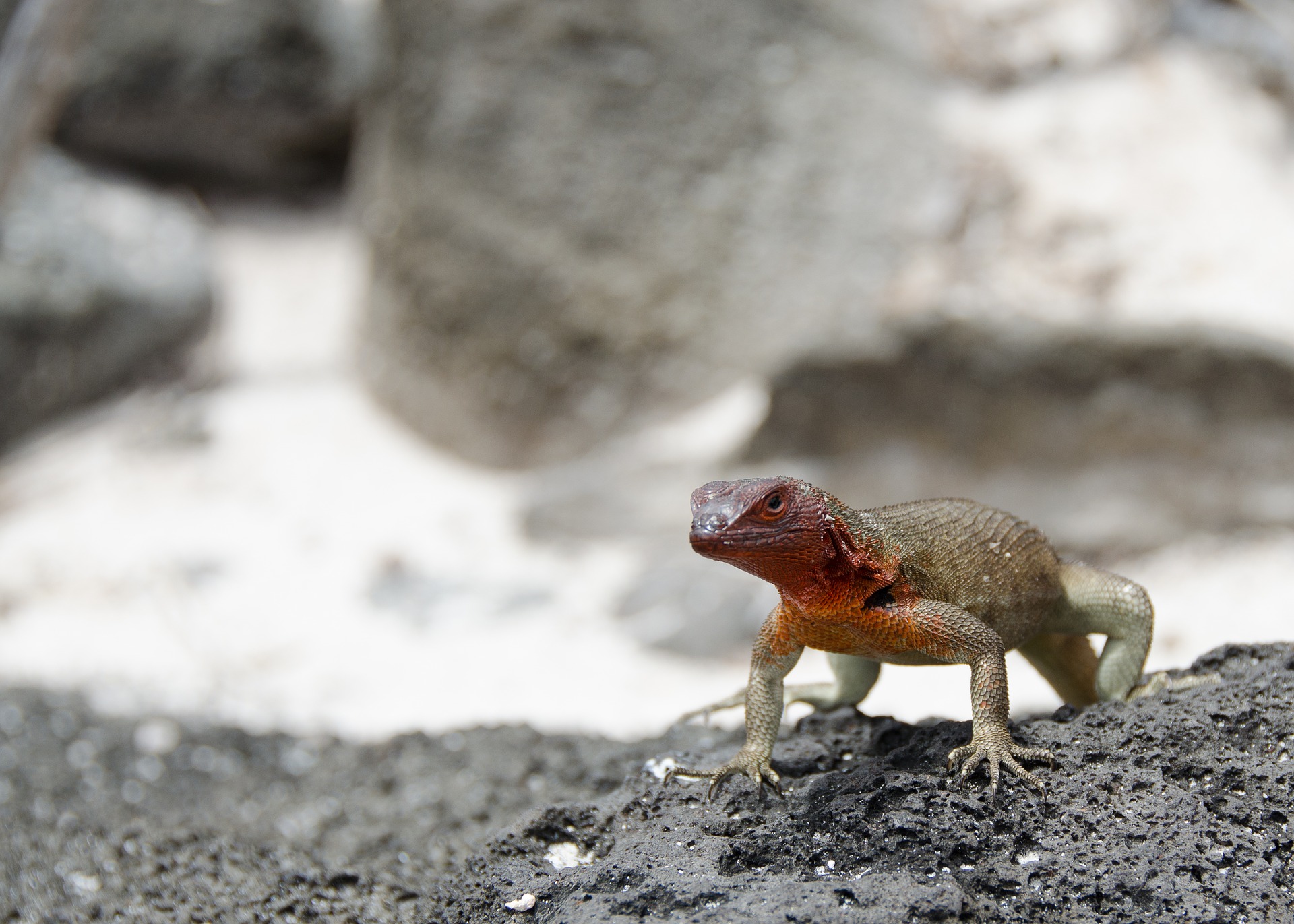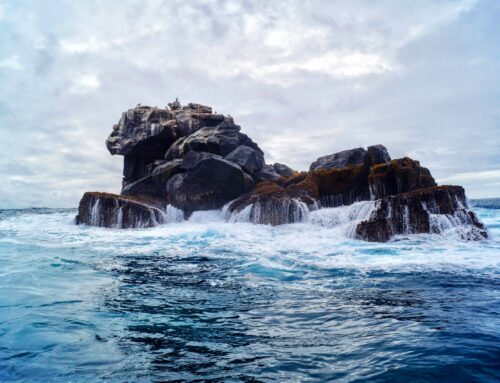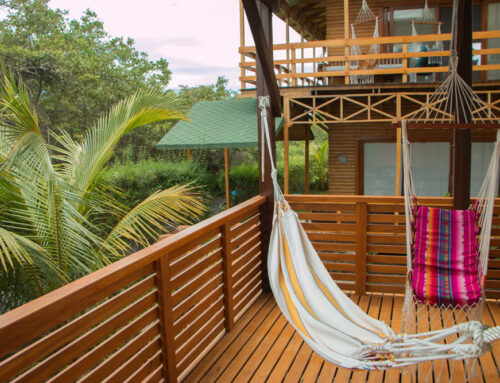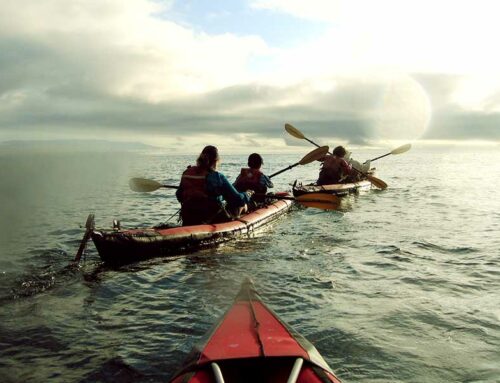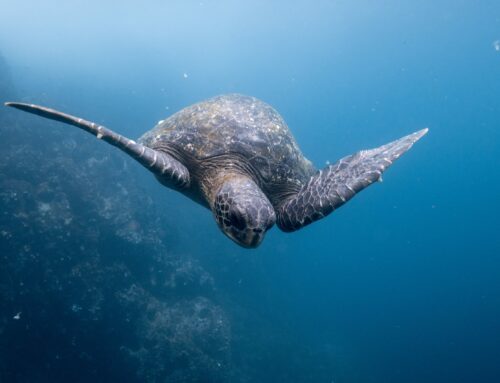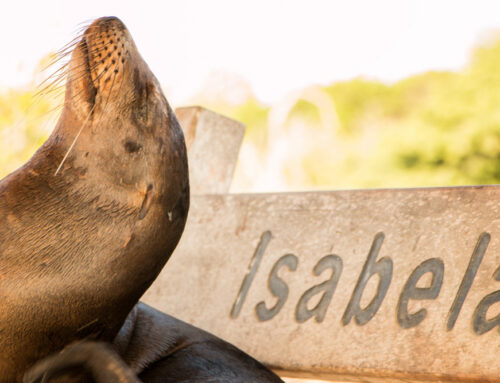Those who venture to the Galapagos Islands often do so with the dream of finding and admiring many of its unique animals. After all, there are very few places in the world where you can see such dazzling creatures all in one place. In this article, we share some information about eleven amazing Galapagos Islands animals, which will make you want to book onto the next flight!
The uniqueness of Galapagos Islands animals
The Galapagos Islands are found approximately one thousands kilometres west of the Ecuadorian coast and there are 21 land masses in total. The youngest island of them all – Fernandina – is only 500,000 years old, meanwhile the oldest – Española – is only four million years old. There are an amazing 200 recorded species of Galapagos Islands animals in this beautiful location in the Pacific Ocean. The birds, reptiles and mammals make for an animal-lovers dream.
One of the great things about the Galapagos Islands, is that much of their surface is uninhabited by humans. Most of the 13 larger islands and 7 smaller islands remain uninhabited, with around 97% of the archipelago conserved with national park status. Resultantly, the islands are some of the most unspoiled places in the world and they offer guests some incredibly rich wildlife experiences.
Even between islands in the Galapagos archipelago, you can find hugely varying species. Due to differing island habitats, several species including that of iguanas and tortoises have evolved in very different ways, forming amazing sub-species, only kilometres away from their relatives! This is exactly what Charles Darwin discovered when he found himself in the Galapagos Islands in the early 1800s and what lead to his famous book, ‘The Origin of the Species’.
It’s safe to say that if you’ve seen the animals of the Galapagos Islands, you’ve been lucky enough to witness some of the most unique creatures in the entire world.
11 Amazing Galapagos Islands Animals
In the remainder of this article, we share with you eleven wonderful animals from the Galapagos Islands. Whether you enjoy diving and searching for marine life, or prefer to spend your days bird watching, the following will thoroughly excite you!
During your stay on the Galapagos Islands, make sure that you make environmentally responsible decisions. At the end of this article, find information about Chez Manany Ecolodge, a place where you can stay in harmony with the pristine Galapagos Islands.
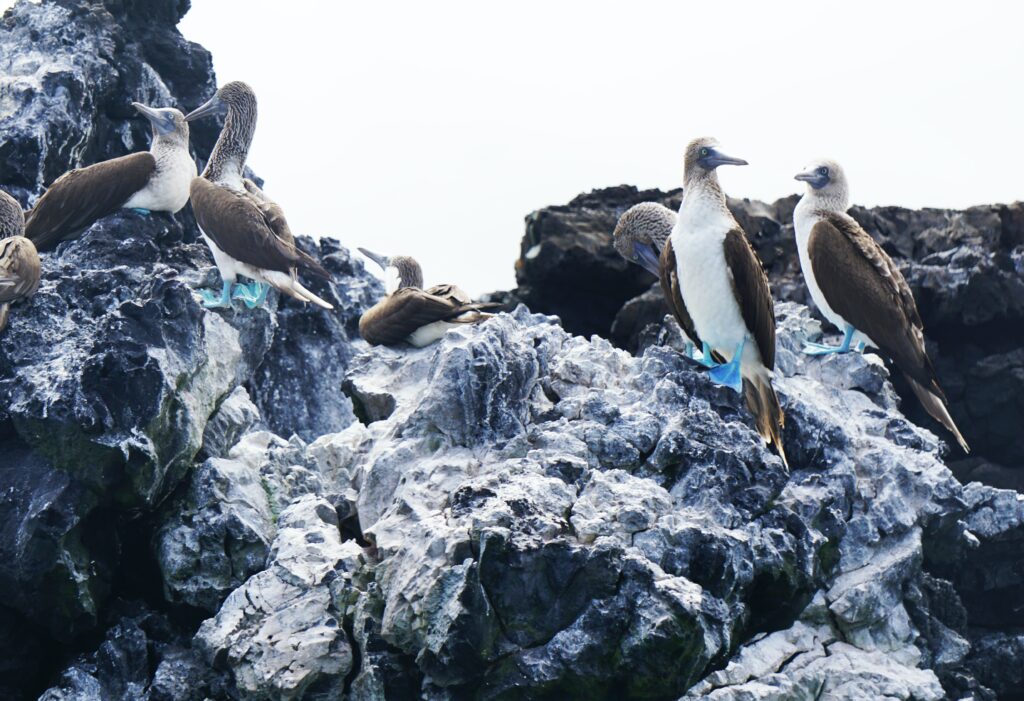
Galapagos Blue-Footed Booby
It’s not often that you see such bright blue colouring on an animal of any kind. The Blue-Footed Booby is bird famous for its electric blue feet which play a large role in its elaborate courtship routine. Whilst some suggest that the brighter the feet, the more likely a male is to attract a mate, no one is sure why they’re quite so vibrant. A Blue-Footed Booby will mate for life and they travel in groups of up to 200 birds! These fantastic birds can be found on many of the Galapagos Islands including Pinzon, Santa Cruz, Isabela and Floreana and you’ll be able to spot them year-round.
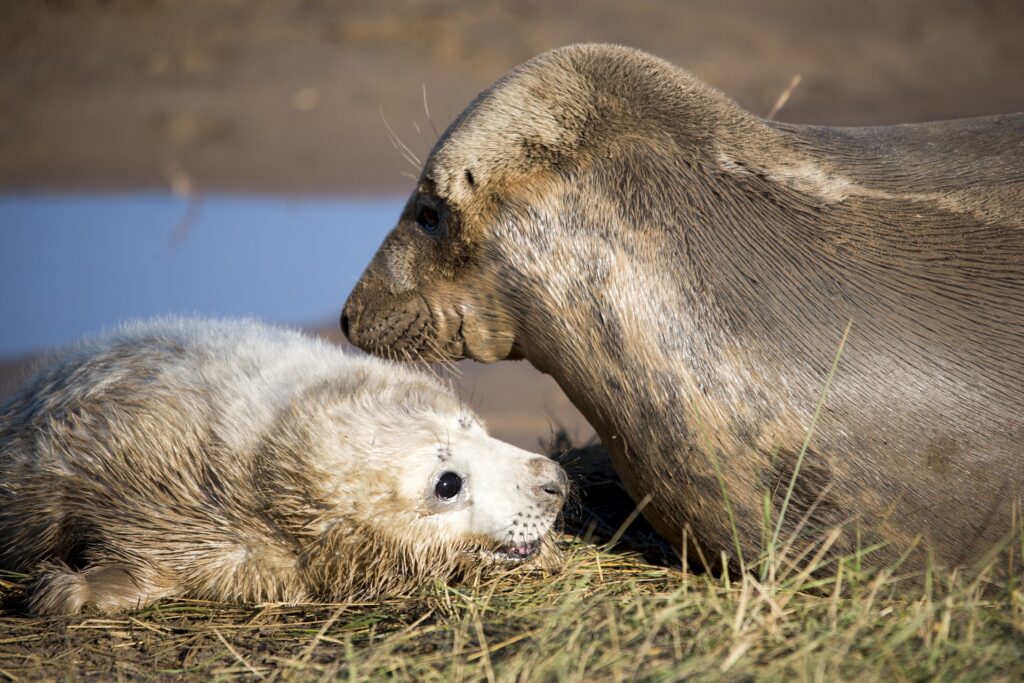
Galapagos Fur Seal
Not to be confused with the Galapagos Sea Lion – found in lots of spots across many of the Galapagos Islands – the Galapagos Fur Seal is generally smaller, broader and has a furry coat. This iconic fur can vary from brown to light grey. Endemic to the islands, these beautiful creatures are unfortunately classed as endangered and those lucky enough to see them should cherish the experience. Interestingly, the Galapagos Fur Seal is very rarely found at sea and if you are lucky enough to see one, it will most likely be under some shade or amongst the rocks.
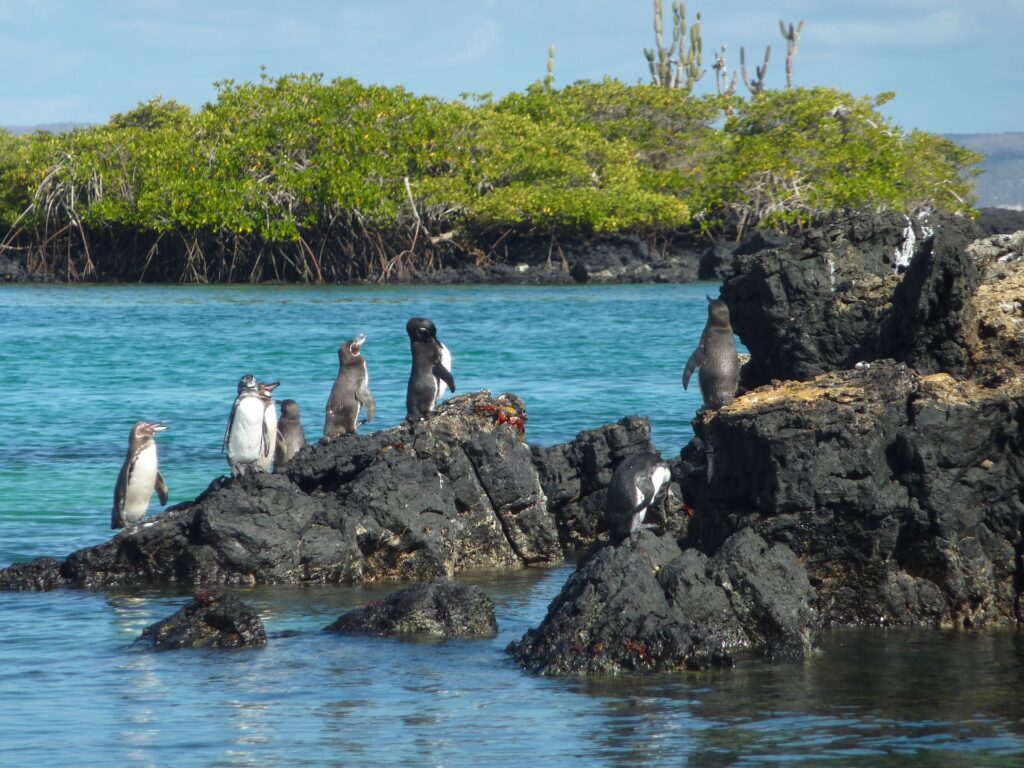
Galapagos Penguin
The Galapagos Penguin is the only penguin to exist north of the equator, making it a very special animal on the Galapagos Islands. The reason these creatures are able to survive here in the tropics is due to the geography of the islands. As cold water travels from Antartica via the Humboldt Current, it passes the island group and creates a cold corridor. As a result, these penguins are perfectly catered to!
Galapagos Penguins breed all year round and unlike their Antarctic neighbours, they don’t have to worry about their eggs freezing. Having said that, large marine predators of the Galapagos Islands such as sharks, seals and sea lions are predators for these animals, meaning that when they head out to sea, they never stray too far from the shore!
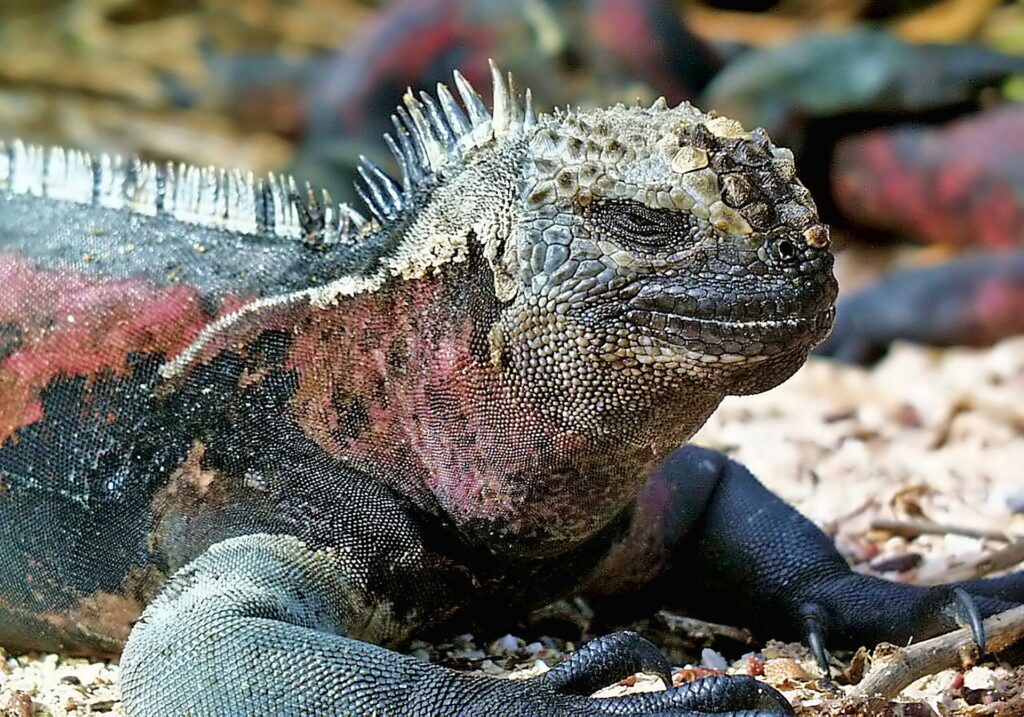
Galapagos Marine Iguana
Perhaps one of the most iconic Galapagos Islands animals is the Galapagos Marine Iguana – the only sea lizard on the planet! Interestingly, these lizards hang out in groups, often found clustered together and even clumped on top of each other upon rocks. Groups of the iguanas live on Fernandina, Española, Floreana, Isabela, and Santa Cruz and they aren’t usually too hard to find either.
During mating season – from January to March – the lizards turn different colours, making it a great time to visit. You’ll often find them sun bathing on rocks, so don’t forget to keep our eyes peeled as you wander across the beach or black rocky outcrops.
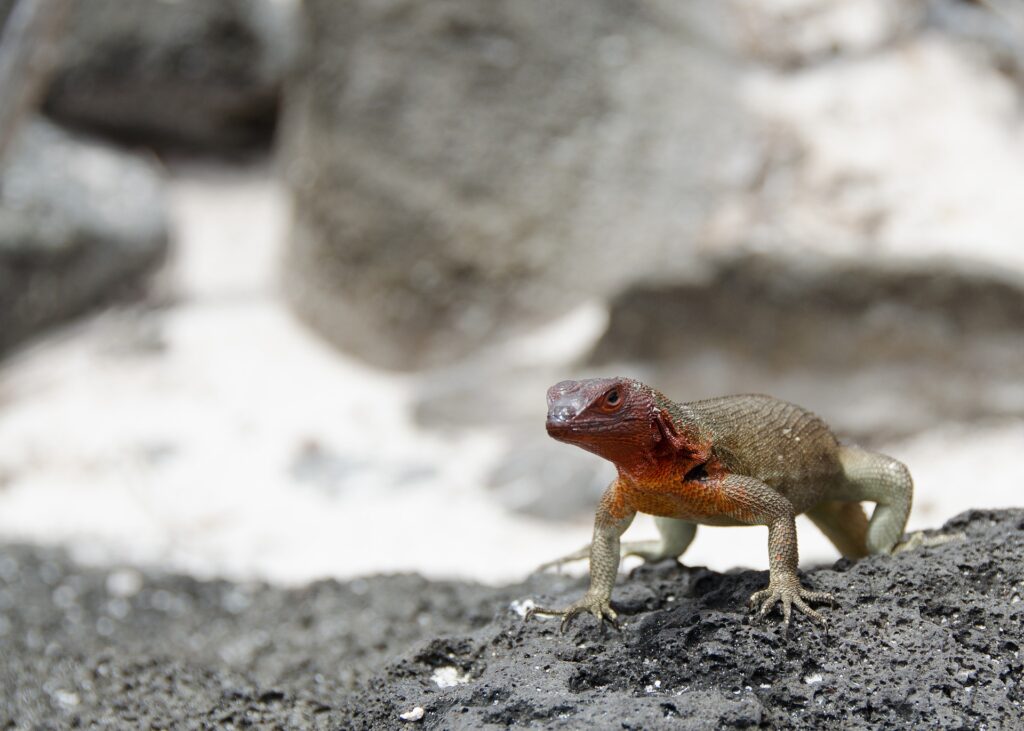
Lava Lizard
You might mistake these tiny little lizards for small iguanas, however they’re entirely different. The Lava Lizard is found across the islands, often hanging out in small groups and enjoying the beating Galapagos sun. In terms of their colouration, these lizards vary from black, brown, green and grey and a male’s head is often decorated with yellow specks. Females on the other hand, have a red throat and head.
Lava Lizards are the most abundant lizards on the Galapagos Islands, but you won’t find them on Darwin, Wolf or Genovesa Islands. If you’re very lucky, you’ll see Lava Lizards doing their famous ‘push ups’; an act used to intimidate rival males! When attracting a mate, the lizards begin their push ups, with other males joining in and competing. It truly is a sight to see!
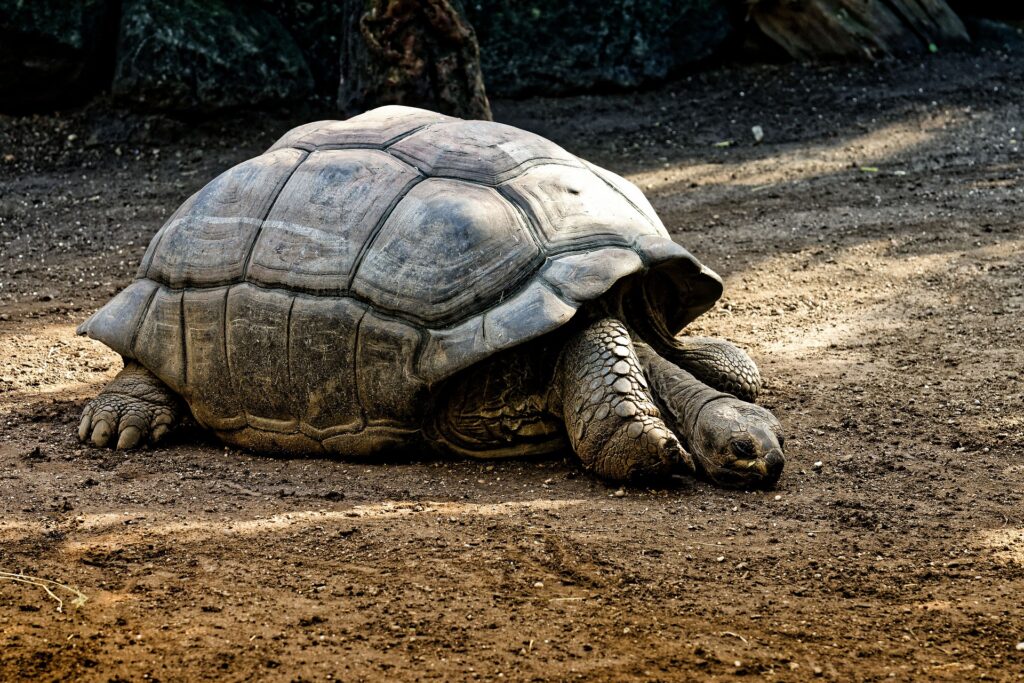
Galapagos Giant Tortoise
The word ‘Galapago’ is an old Spanish word meaning tortoise. It’s therefore no surprise that the Galapagos Giant Tortoise is an iconic and widely appreciated animal across the Galapagos Islands. They are the largest living species of tortoise in the world, with some weighing up to 417 kg! Galapagos Giant Tortoises spend their days lounging around and eating ground vegetation as well as some taller-growing plants.
Amazingly, they can go for a whole year without any food or water! And as if that wasn’t shocking enough, these wonderful animals also have stunningly long lifespans – often over 100 years – making them one of the longest-lived vertebrates. Captive Galapagos Giant Tortoises have lived to 177 years old! In the Galapagos Islands, you can see ten types of tortoise; on Isabela, Santa Cruz, Pinzon, Española, Santiago, and San Cristobal all year round. A great place to see them is at Isabela Tortoise Breeding Centre.
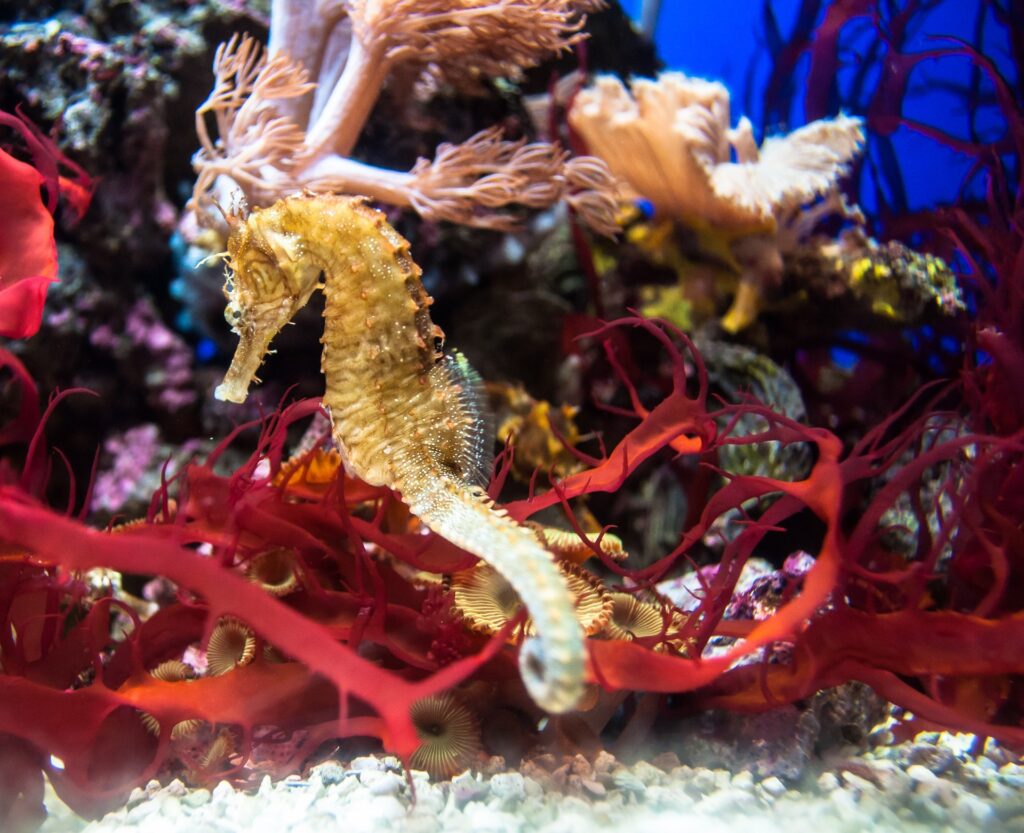
Seahorses
A population of seahorses lives off the coast of Isabela Island in the Galapagos Islands and they’re often visible to divers and snorkelers. In particular, at Las Tuneles (at Isabela Island), if you’re lucky you’ll spot some dancing amongst the rocks. In the Galapagos Islands, seahorses are often yellow in colour due to the specific diet available to them. Head out with a tour guide and perhaps enjoy a dive to catch a glimpse of them from Puerto Villamil on Isabela Island. Seahorses feed on small organisms such as plankton and the males carry the babies, not the females. At one time, a male can carry up to 1000 eggs, after a female seahorse lays them in his pouch.
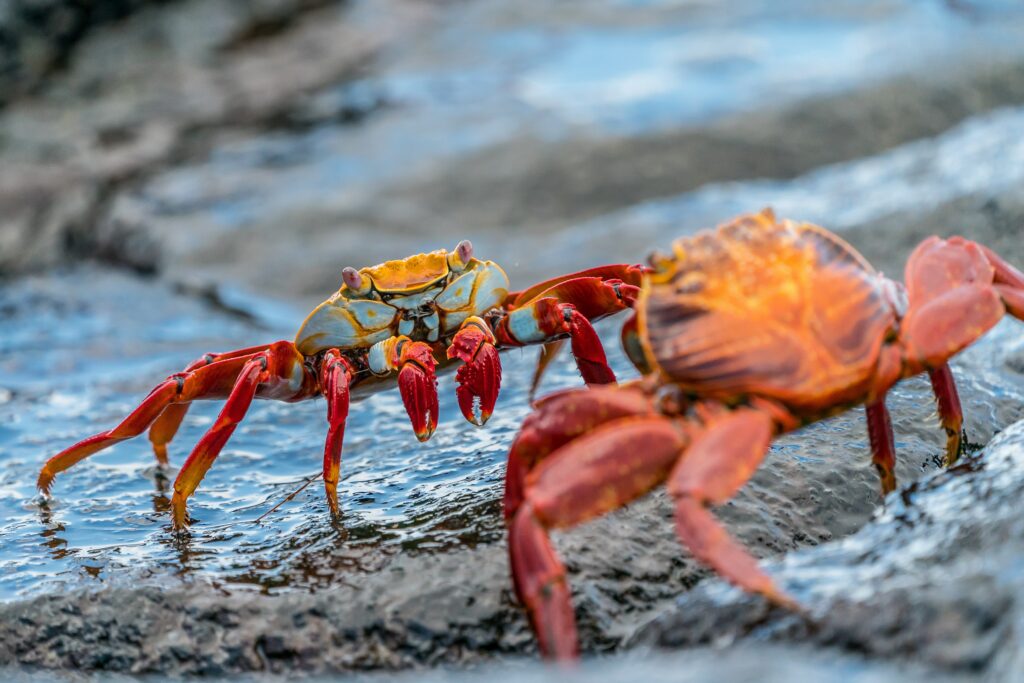
Sally Lightfoot Crab
You don’t have to look far to spot a Sally Lightfoot Crab in the Galapagos Islands. Supposedly named after a Caribbean dancer, these crabs have amazing agility and boast bright colours. Adult Sally Lightfoot Crabs have intense blue and red colouring on their shells, as well as a white or pale blue underbelly. On the other hand, younger crabs have darker colouration and often red spots, making them far more camouflage to predators.
These incredibly agile crabs can not only run at pace in different directions, but they can actually climb vertically! You can find Sally Lightfoot Crabs across the entire western coast of South and Central America. They eat a very varied diet, making them important for the coastal ecosystem in the Galapagos Islands.
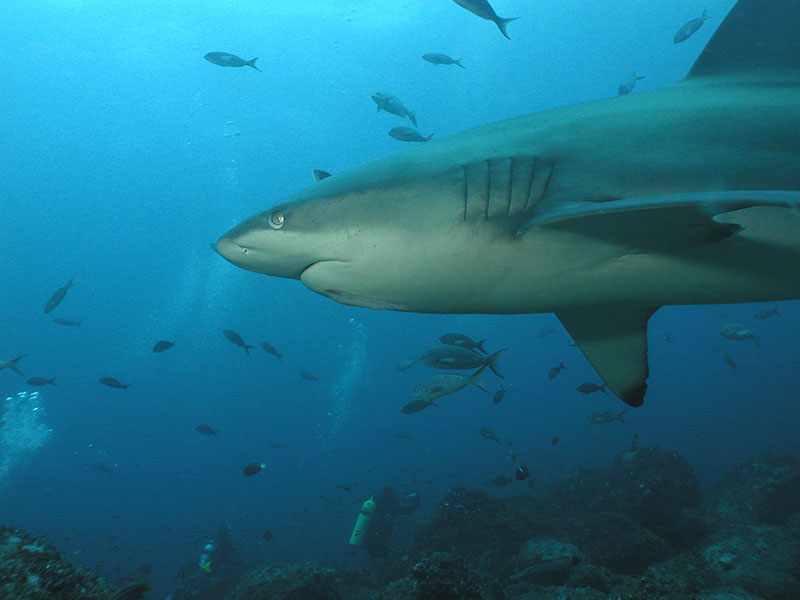
Galapagos Shark
Galapagos Sharks actually live all over the world, however they were first identified in the Galapagos Islands, hence their name. They favour clear reef environments and often live around oceanic islands. Mostly, Galapagos Sharks live in the deep waters surrounding Wolf and Darwin islands, however it’s not unusual to see them around Cristobal or Española. These sharks reach approximately 3 metres in length and have a whopping 14 rows of teeth with which they hunt their prey!
Feeding mostly on benthic bony fish in other locations around the world, in the Galapagos Islands the sharks also prey on fur seals and sea lions too. If you’re hoping to see a Galapagos Shark during your trip to the islands, just about any time of year will do. However, mating seasons – which takes place between January and March – sees the sharks coming closer to the islands in search of shallow waters, making sightings far more common.
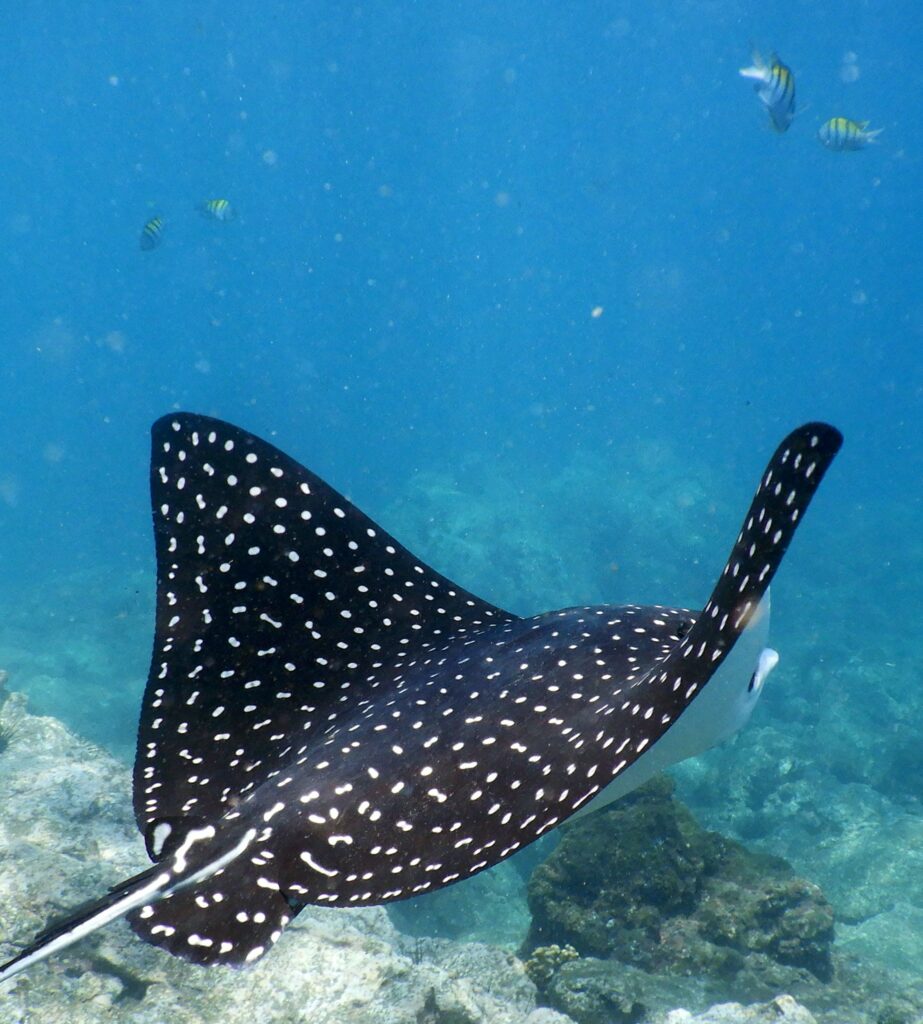
Spotted Eagle Ray
Perhaps the most beautiful of creatures in this list of eleven amazing Galapagos animals is the Spotted Eagle Ray. Recognisable by the striking patterns upon their backs, you’ll find Spotted Eagle Rays lurking in shallow waters amongst corals reefs and in sheltered bays. From December to May, Isabela Island is an excellent spot to see thee amazing creatures, as is Santa Cruz and occasionally Floreana. Spotted Eagle Rays eat crustaceans and mollusks, which they are able to break with their strong jaws.
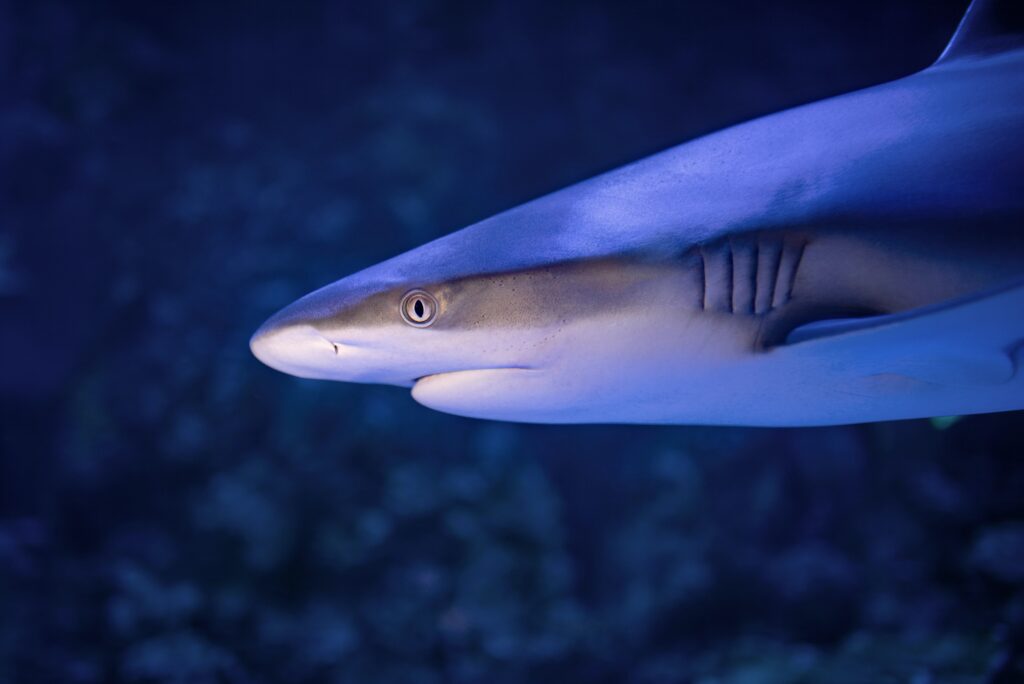
Tintorera Shark
Spotted at the islands of Tintoreras – very close to the port of Puerto Villamil – snorkelers can find a small white tipped shark, which shares the same name as the place it can be spotted; the Tintorera Shark (or Whitetip Reef Shark). Lurking in the lava fissures of the volcanic islands, these sharks typically have an average size of around 1.5 metres. Plentiful food supply across the Galapagos Islands, means that these sharks are somewhat docile and rarely show any aggression. As a result, it is possible to swim with Tintorera Sharks during a snorkelling trip to the islands of Tintoreras. Although they are protected from fishing in the Galapagos Marine Reserve, these sharks which live in shallow waters are vulnerable to the nets and longlines used by fishers in the region. Their population is thought to be quite rapidly declining as a result.
Where to stay in the Galapagos Islands
For your trip to the amazing Galapagos Islands, you deserve to stay somewhere equally special. During your stay on Isabela Island, arguably the most outstanding location when it comes to wildlife spotting in the archipelago, stay at Chez Manany! The accommodation – equipped with comfortable rooms, blessed with green views and designed with relaxation in mind – is the perfect spot for a Galapagos escape.
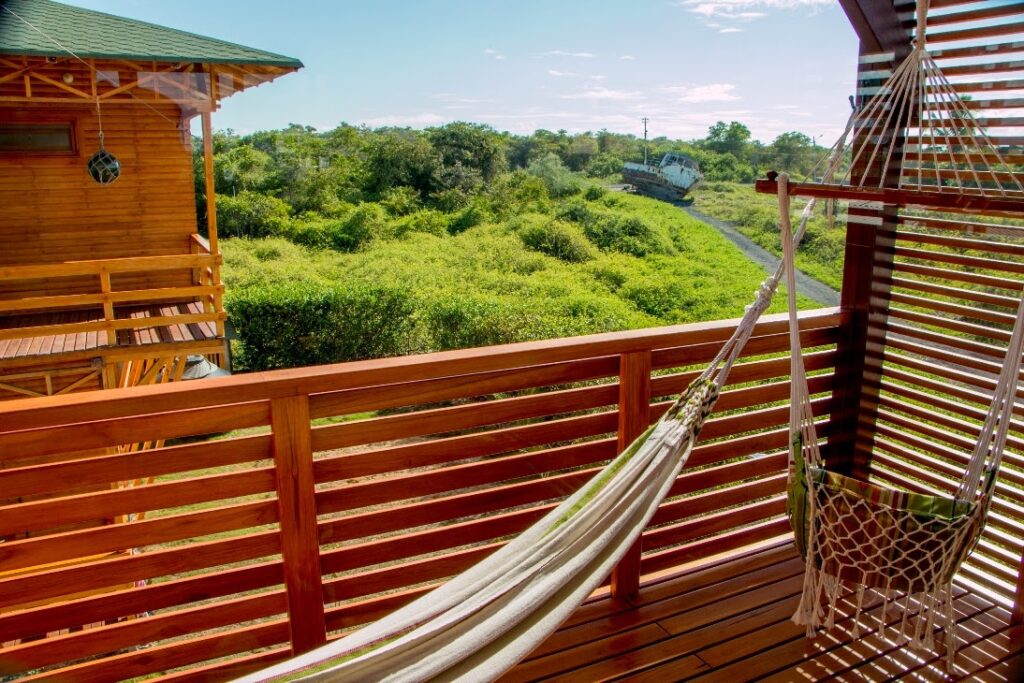
For more information regarding how to book your room at Chez Manany, click here!

